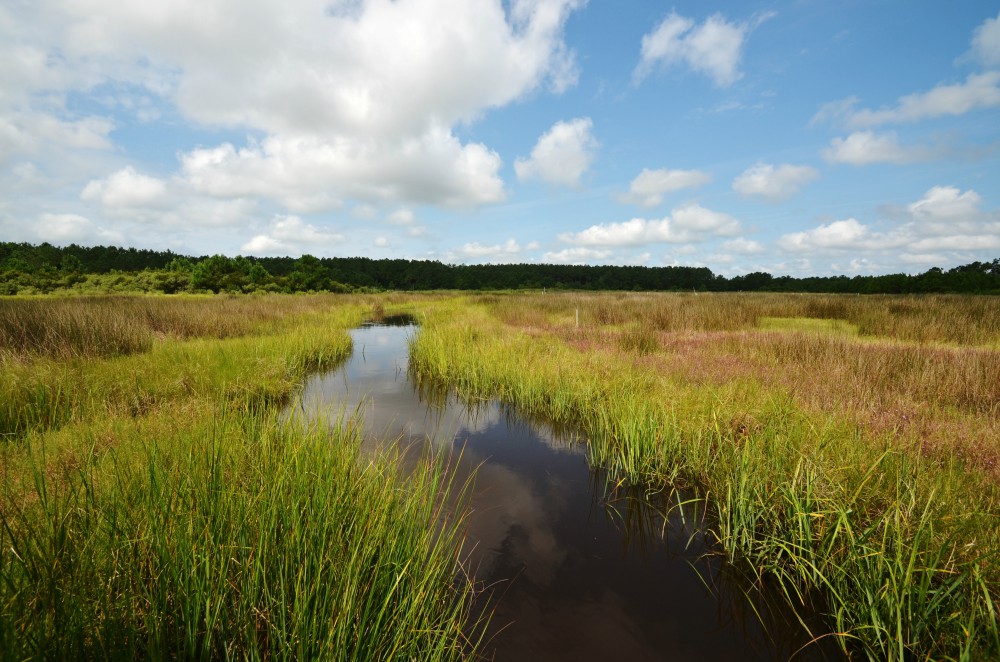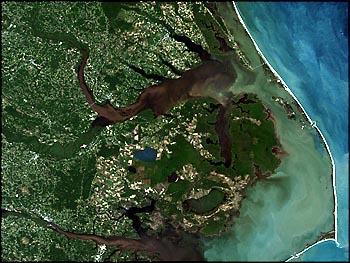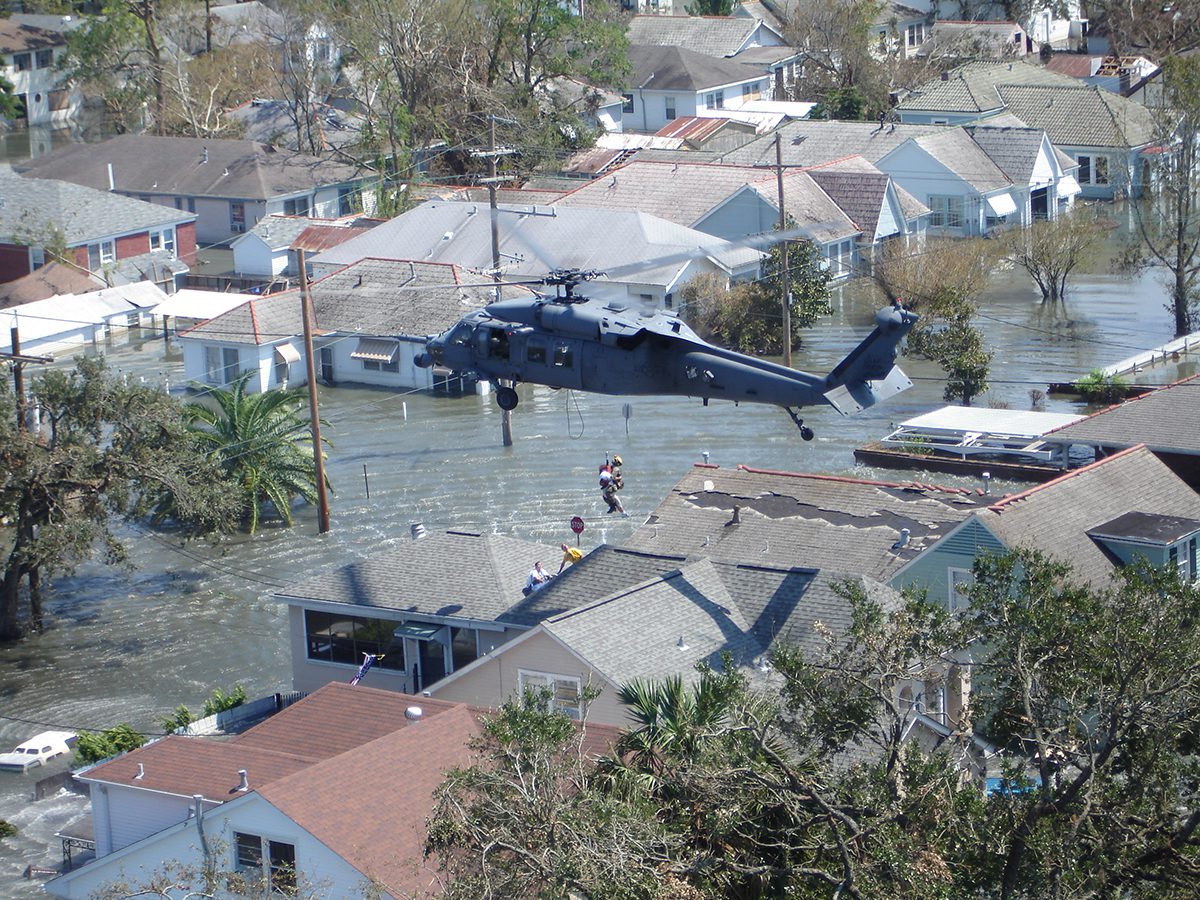
Last of two parts
BEAUFORT– As more people move toward the coast, estuaries are increasingly under stress. If not correctly managed, North Carolina’s estuaries may see the same fate as other overwhelmed estuarine systems in the country.
Supporter Spotlight
The Chesapeake Bay, for example, was once a thriving estuary with unmatched oyster harvesting. According to the National Oceanic and Atmospheric Administration, numbers have fallen to less than 1 percent of historic populations because of overfishing, poor water quality, habitat degradation and disease.
North Carolina is home to the country’s second-largest estuarine system behind the Chesapeake Bay, the Albemarle-Pamlico estuary. As with the Chesapeake Bay, national and state agencies have both worked to protect the resources and livelihoods the areas provide. Despite these efforts, over the years both areas have lost habitats, suffered from poor quality and seen increasing development nearby. Restoration efforts in both states are now focused on improving water quality and growing the oyster economy.
This week is National Estuaries Week, as designated by the nonprofit group, Restore America’s Estuaries. In this second installment of a two-part special report, we will look at the types of threats North Carolina’s estuaries face and what their futures may look like.
Coastal Living
In 2010, NOAA reported that about 40 percent of the United States’ population lived directly on a shoreline. This percentage is projected to increase, along with the risks estuaries face. North Carolina also has the fourth most beach visits in the country, adding more pressure to its coastal region.

Joel Fodrie, an assistant professor at the University of North Carolina at Chapel Hill’s Institute of Marine Sciences in Morehead City, said coastal development presents estuaries with many different challenges at one time.
Supporter Spotlight
“Those local impacts, because they happen everywhere, those may be the real dangers,” Fodrie said.
Boating, as one example, can result in cumulative deterioration as thousands of vessels transit estuaries annually, disrupting ecosystems, Fodrie said. Construction of bridges and causeways can also add pressure to the various habitats in estuaries, including oyster reefs, mud flats and sea grass beds.
Lexia Weaver, a coastal scientist at the North Carolina Coastal Federation, said waterfront property owners who install bulkheads and seawalls are among the biggest offenders. The hardened shorelines cause the salt marshes along properties to disappear.

“Whenever they put a bulkhead in, it takes away all of that habitat in front of it,” Weaver said.
Stormwater runoff from development also affects estuaries.
After heavy rainfalls, chemicals, sediment and bacteria are carried by stormwater into estuarine systems. The Division of Marine Fisheries will temporarily close waters to oyster fishing and clamming if bacterial concentrations are high enough to keep consumers from eating contaminated shellfish. During these closures, it is unlawful to take or sell oysters, clams and mussels from the polluted areas.
Just this week, heavy rainfall and runoff associated with Tropical Storm Julia caused the division to close waters in Carteret, Craven and Pamlico counties, and continue closures of waters in five other coastal counties.
Continued coastal development can make this problem worse as roads and other impermeable surfaces prevent stormwater from filtering through soil naturally.
Pollution carried by stormwater has also affected the Chesapeake Bay. The bay has some of the most documented cases of dead zones, or low-oxygen waters, in the country. In July, an update from the Maryland Department of Natural Resources showed that 20 percent of the Chesapeake Bay suffered from dead zones. These areas can develop when runoff mixes fertilizers and other nutrients into the water, promoting algae growth. Algal blooms then draw oxygen out of the water, often leading to fish kills.

Both the Albemarle and Pamlico sounds are at heightened risk of low-oxygen waters because of their proximity to North Carolina’s industrial farming areas.
Poor water quality also puts the state’s commercial fishing economy at risk by disrupting habitats like sea grasses. Commercially important species of flounder, black bass and blue crab rely on North Carolina’s sea grasses for part or all of their life cycles.
Disease is another threat to estuarine habitats. In the Chesapeake Bay, disease and overfishing nearly wiped out once-thriving oyster populations. It is estimated there used to be enough oysters to filter the entire bay in a single week, but now it could take the remaining populations a year to do the same work.
The same trend of decline is visible in North Carolina’s oyster reefs, which were once rich fisheries. According to the North Carolina Coastal Federation’s 2015 State of the Oyster report, oyster harvests have declined 15-20 percent since 1889. The culprit is dermo, a disease that kills oysters before they reach a certain size.

Anne Deaton of the Division of Marine Fisheries habitat-assessment program said that there has been a historic loss of oysters, causing the fishery’s status to be “concern” because of disease, poor water quality and habitat loss.
“We’ve improved the regulations,” Deaton said, “but they just haven’t come back to what they used to be.”
Climate Change
Fodrie said the threat of climate change is not as immediate as development along the coast. Species, he said, have for the most part experienced climate changes over geological time and may be able to adapt.
“In the historical record from 15,000 years ago to 5,000 years ago, they basically averaged a meter rise every century, so the animals and plants in the estuaries have seen that before,” Fodrie said. “They can handle that in a vacuum.”
Fodrie said the more interesting question is how estuaries will adapt to climate change while also dealing with humans.
“The new player is going to be us,” he said, “and so it’ll really be how we respond, how adamant we are to tow the line or how easily we are able to retreat away from a moving seashore. The plants and animals will be responding to us and to that change.”
Estuaries may be able to adapt to human-induced climate change if other, local threats are well managed.
“They’re certainly resilient as long as we don’t screw up too badly,” he said.
The Future of North Carolina’s Estuaries
If the future of North Carolina’s estuaries looks anything like the Chesapeake Bay, it is concerning. However, Fodrie said it’s difficult to predict what the future will look like for the state’s estuaries.
Restore America’s Estuaries, a nonprofit that works to protect the country’s estuarine systems, said on its website that as individuals, people can help protect the future of estuaries by recycling and minimizing vehicle emissions.
Weaver is optimistic about the future of the state’s estuaries. She said North Carolina is doing more than other parts of the country to protect its estuarine systems.
“I think here in North Carolina, because of all the efforts that are happening with respect to oysters and living shorelines and all the research that’s going on because all the marine labs are here, that its promising,” she said.
Funding and grants aimed at improving and restoring the state’s estuaries and fish habitats are also available, Weaver said. The federation uses this type of funding to restore living shorelines, salt marshes and oyster reefs.
It is difficult to know how the continued effects of human encroachment and rising sea levels will change estuaries and the organisms that will rely on them.
Estuaries’ blessing is also their curse. The calm, productive waters inspire people to protect them, while also fishing, recreating and living near them.
“The challenge,” Fodrie said, “is to make sure we don’t love the estuaries to death.”
To Learn More
Read Part One







